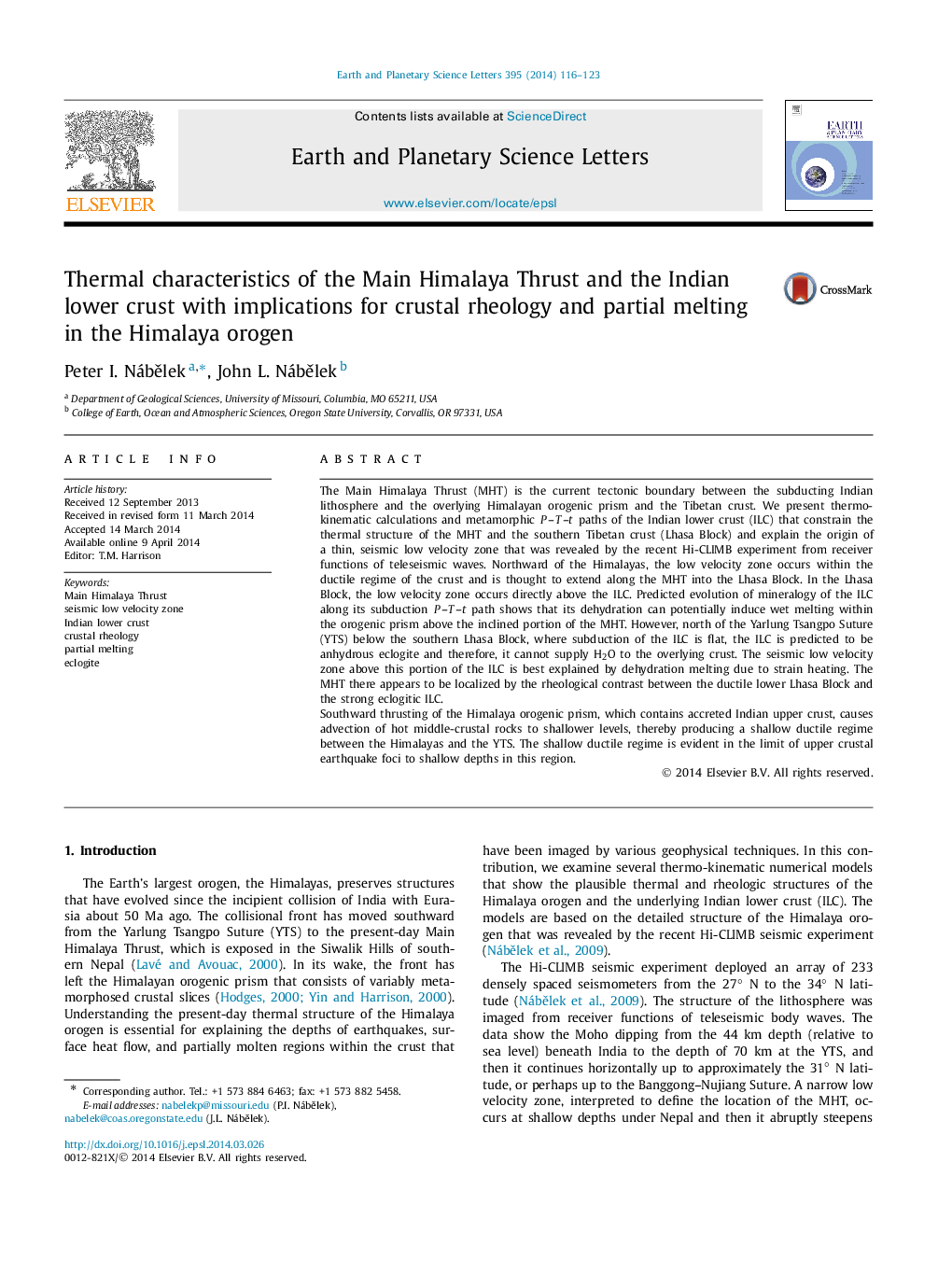| کد مقاله | کد نشریه | سال انتشار | مقاله انگلیسی | نسخه تمام متن |
|---|---|---|---|---|
| 6429266 | 1634761 | 2014 | 8 صفحه PDF | دانلود رایگان |
- Models are presented for thermal and rheologic structures of the Himalaya orogen.
- Seismic low velocity zone occurs above the Main Himalaya Thrust.
- The low velocity zone is caused by partial melting.
- Both “wet” melting and dehydration-melting due to strain heating operate.
- The Indian lower crust enters the eclogite facies below the Lhasa Block.
The Main Himalaya Thrust (MHT) is the current tectonic boundary between the subducting Indian lithosphere and the overlying Himalayan orogenic prism and the Tibetan crust. We present thermo-kinematic calculations and metamorphic P-T-t paths of the Indian lower crust (ILC) that constrain the thermal structure of the MHT and the southern Tibetan crust (Lhasa Block) and explain the origin of a thin, seismic low velocity zone that was revealed by the recent Hi-CLIMB experiment from receiver functions of teleseismic waves. Northward of the Himalayas, the low velocity zone occurs within the ductile regime of the crust and is thought to extend along the MHT into the Lhasa Block. In the Lhasa Block, the low velocity zone occurs directly above the ILC. Predicted evolution of mineralogy of the ILC along its subduction P-T-t path shows that its dehydration can potentially induce wet melting within the orogenic prism above the inclined portion of the MHT. However, north of the Yarlung Tsangpo Suture (YTS) below the southern Lhasa Block, where subduction of the ILC is flat, the ILC is predicted to be anhydrous eclogite and therefore, it cannot supply H2O to the overlying crust. The seismic low velocity zone above this portion of the ILC is best explained by dehydration melting due to strain heating. The MHT there appears to be localized by the rheological contrast between the ductile lower Lhasa Block and the strong eclogitic ILC.Southward thrusting of the Himalaya orogenic prism, which contains accreted Indian upper crust, causes advection of hot middle-crustal rocks to shallower levels, thereby producing a shallow ductile regime between the Himalayas and the YTS. The shallow ductile regime is evident in the limit of upper crustal earthquake foci to shallow depths in this region.
Journal: Earth and Planetary Science Letters - Volume 395, 1 June 2014, Pages 116-123
